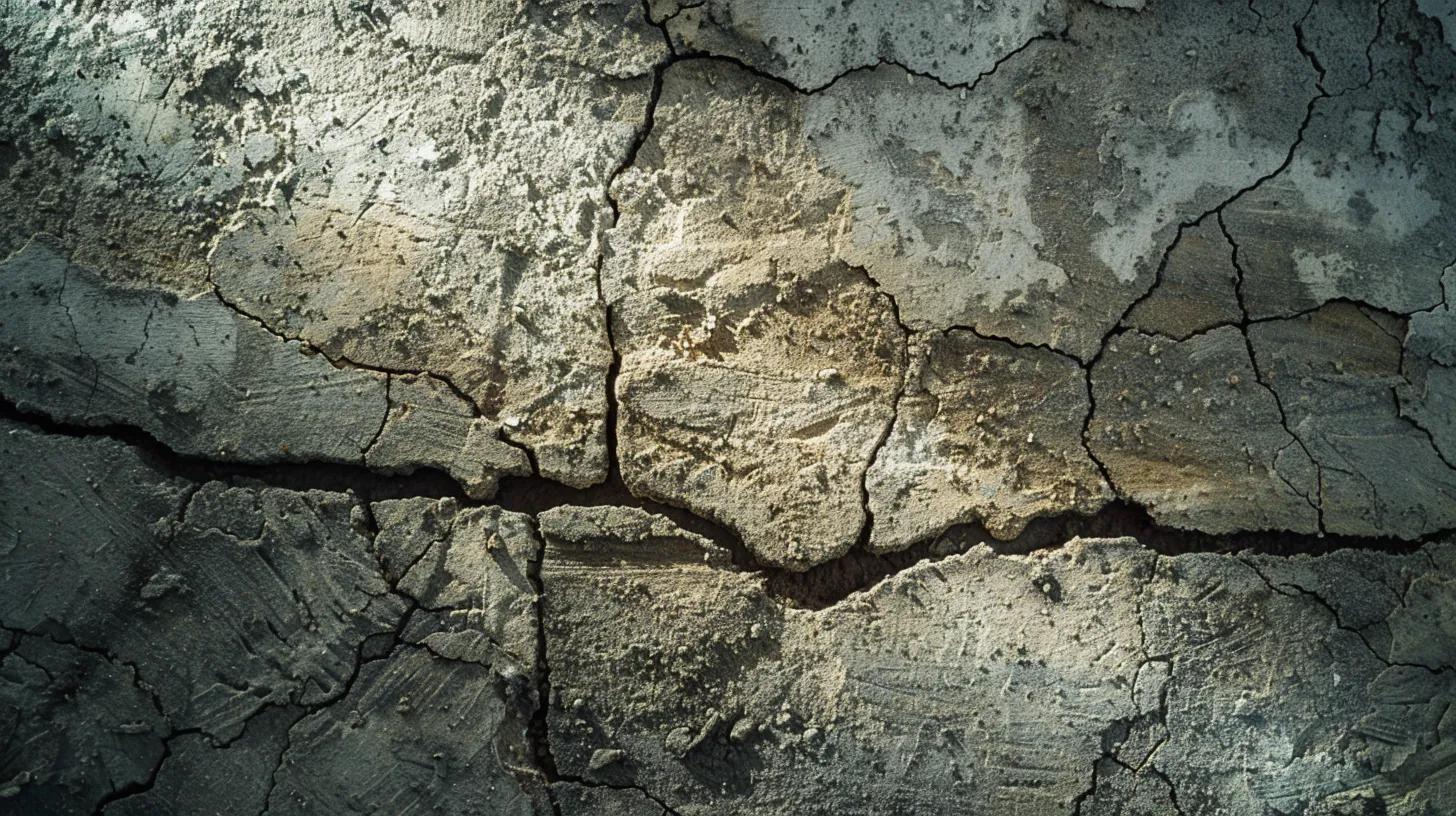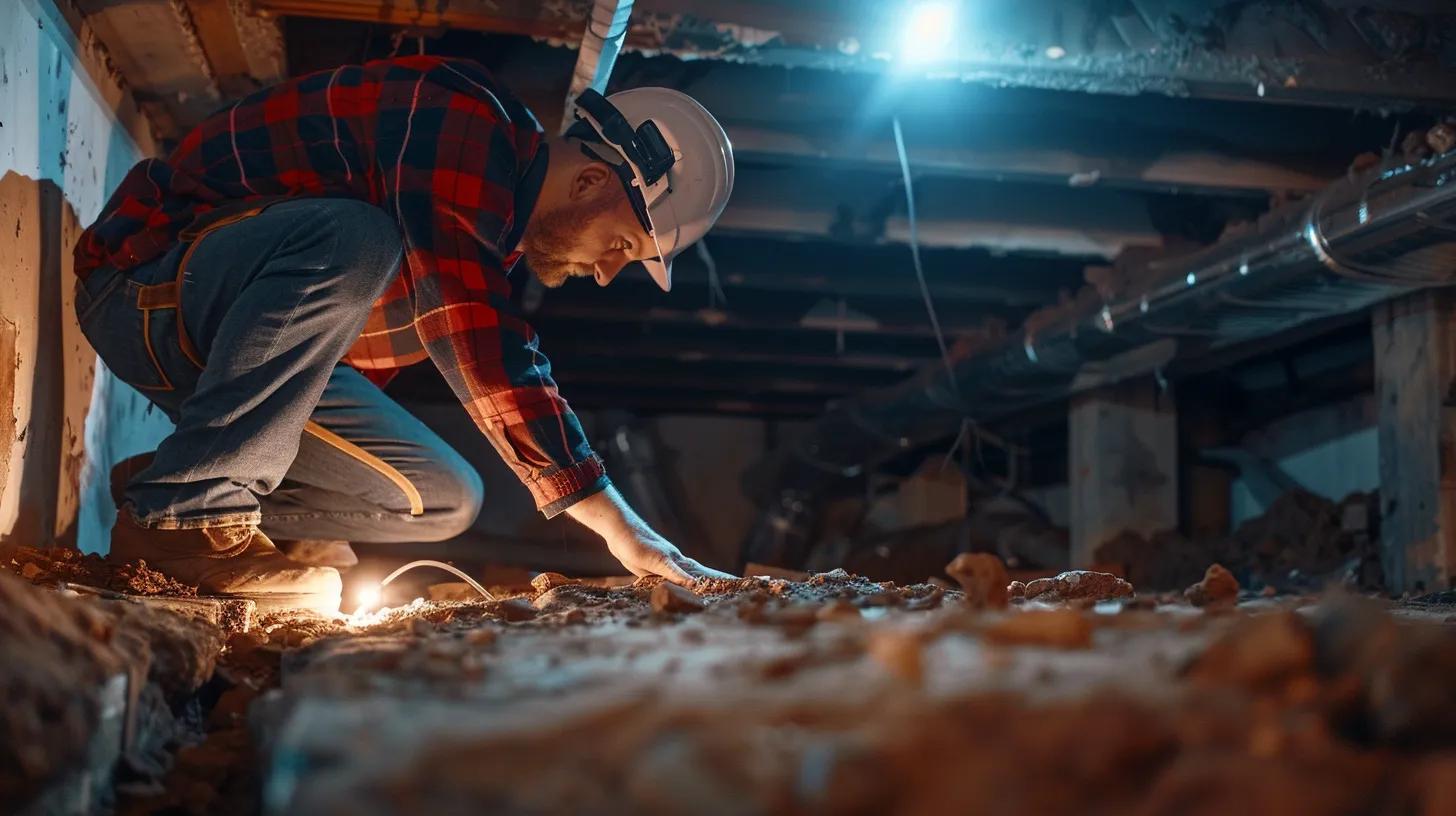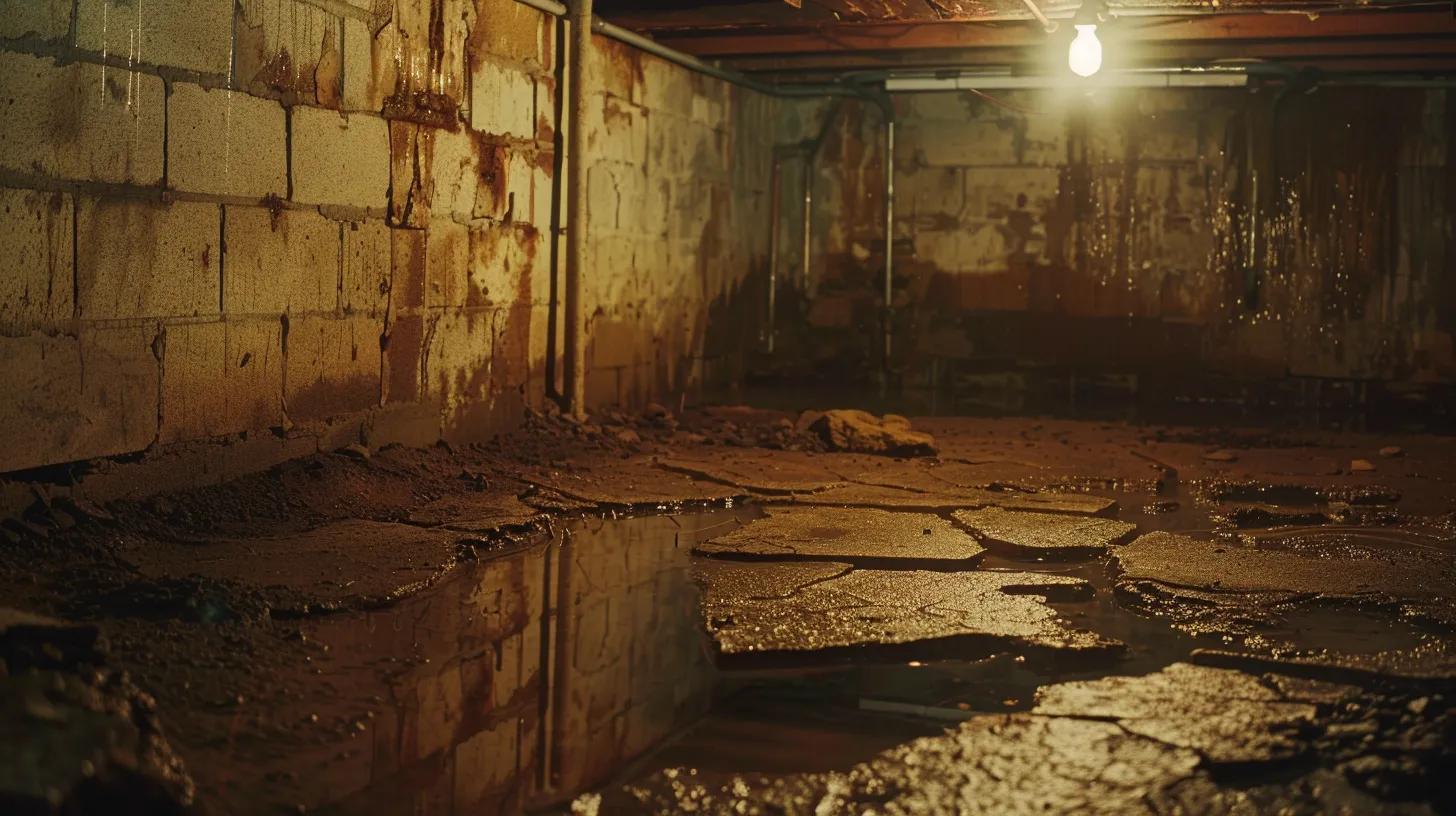Top Indicators of Foundation Problems
Foundation issues can be a serious concern for any property owner because they directly impact the structural integrity and safety of a building. At FMF Foundation Repair, we understand that even minor foundation problems can lead to interior water leakage, uneven floors, or cracks in walls if not addressed promptly. In this article, we explore common signs of foundation damage, explain how different types of cracks and symptoms indicate deeper issues, and outline steps to protect your property. Our goal is to offer comprehensive, actionable information that helps detect early foundation problems and guides you through scheduling further inspections and repairs. We use straightforward, practical language so that homeowners and property managers in Boston can act confidently to protect their investment and ensure a durable home environment.
What Are the Most Common Signs of Foundation Damage?
Common signs of foundation damage include visible cracks, uneven floors, sticking doors and windows, and water damage. Each symptom is linked to underlying structural problems and environmental factors that stress the foundation.
Which Types of Cracks Indicate Foundation Issues?
Cracks in walls, floors, or ceilings are frequently observed indicators of foundation damage. Vertical cracks might result from natural settling, while horizontal or diagonal cracks often signal significant pressure from the soil. When cracks widen beyond 1/4-inch or show irregular patterns, they may indicate potential foundation movement or failure. Homeowners observing new or enlarging cracks should consider a professional evaluation to determine if the issue originates from an unstable foundation.
How Do Sloping or Uneven Floors Signal Foundation Problems?
Uneven or sloping floors directly reflect shifting or settling of the structure. Floors that tilt or sag often indicate that part of the foundation is failing to support the building evenly. Soil erosion, water damage, or differential settlement can cause these inconsistencies. Even minor changes in floor levels, particularly when combined with other warning signs, warrant a thorough inspection. Misaligned door frames and windows may also result from this unevenness, signaling additional underlying issues.
Why Do Sticking Doors and Windows Reveal Foundation Damage?
Doors and windows that suddenly stick or fail to close properly suggest a shift in the structure’s frame. When the foundation moves, the alignment of the door or window frames can become distorted. This is often one of the first physical symptoms of foundation movement. If you notice a sudden change in how your doors or windows function, it is critical to schedule a foundation inspection immediately, as this can indicate a broader problem that requires prompt attention.
What Role Does Water Damage Play in Foundation Problems?
Water damage contributes significantly to foundation issues. Excess moisture from poor drainage, heavy rains, or plumbing leaks can weaken the soil supporting the foundation, leading to cracks and shifts. When water seeps into a basement or crawl space, it can also encourage mold growth and further deterioration of building materials. A consistent moisture presence around the foundation perimeter indicates that corrective measures, such as improving drainage systems, are necessary. Regular monitoring for water intrusion and signs of mold or discoloration on walls and floors is essential for home maintenance.
How Can You Differentiate Between Types of Foundation Cracks?

Differentiating foundation cracks is crucial in assessing the severity of issues. Understanding crack patterns, orientation, and width helps determine whether the problem is superficial or indicative of deeper damage.
What Are Vertical, Horizontal, and Diagonal Foundation Cracks?
Vertical cracks usually occur from natural settling and are less concerning if they remain small and do not widen. Horizontal cracks, running along the wall’s length, often suggest lateral pressure from the soil. Diagonal cracks, which slant between vertical and horizontal, can indicate a combination of settling and external pressure. Each crack type should be evaluated by its direction and length to determine the risk. For example, horizontal cracks may cause doors, windows, and walls to become misaligned, requiring immediate professional attention.
Which Crack Widths and Patterns Are Most Concerning?
Crack width is a reliable indicator of foundation concerns. Cracks wider than 1/4 inch, especially when accompanied by irregular or jagged patterns, are worrisome. The rate of crack progression over time also matters; steadily widening cracks suggest active ground movement or deterioration. Patterns such as staircase cracks in brickwork or cracks extending from ceiling to floor indicate deeper structural concerns and require prompt professional evaluation.
How Do Soil and Environmental Factors Cause Different Crack Types?
Soil conditions and environmental factors play a significant role in creating foundation cracks. Expansive clay soils swell when wet and shrink when dry, exerting pressure on walls and slabs and causing various fissures. Poor drainage exacerbates these effects by creating waterlogged conditions that weaken soil support. In colder climates, freeze-thaw cycles can accelerate crack formation as trapped water expands and contracts. In Boston, where weather conditions vary dramatically, understanding how soil movement relates to your foundation is vital for timely intervention.
What Causes Foundation Problems and How Do They Affect Signs?
Multiple factors cause foundation problems, including unstable soil, moisture infiltration, and external environmental pressures. Recognizing these causes helps determine why visible signs appear and what remedial actions may be required.
How Do Soil Issues Lead to Foundation Damage?
Soil is critical to supporting a building’s foundation. When soil is unstable—due to high clay content, erosion, or insufficient compaction—it cannot evenly distribute the building’s weight. This uneven load stresses certain parts of the foundation, creating cracks and structural shifts. Expansive clay soils are particularly problematic because their volumetric changes, in response to moisture fluctuations, lead to pronounced settling. Regular soil assessments and addressing drainage issues can help mitigate these risks.
What Impact Does Poor Drainage and Water Accumulation Have?
Poor drainage is a primary cause of foundation problems. When water accumulates around the foundation, the soil becomes softened and loses load-bearing capacity, eventually leading to subsidence or sudden shifts. Inadequate gutter systems, poorly graded landscapes, or blocked drainage channels contribute to soil saturation and subsequent foundation failure. Water pooling near the home’s perimeter is a clear sign that improvements—such as installing a sump pump or French drain—are needed to protect the foundation.
Can Tree Roots Cause Visible Foundation Damage?
Tree roots can exert significant force on a foundation, especially when they grow beneath or alongside the structure. As trees mature, their roots seek out water and may infiltrate small crevices, worsening existing cracks. Over time, the pressure from growing roots can lead to noticeable foundation shifts or even displacement of sections. While trees provide environmental benefits, proper landscaping and regular maintenance are necessary to ensure roots do not compromise your property’s stability. Monitoring tree growth and controlling root spread can prevent minor issues from becoming severe.
When Should You Schedule a Foundation Inspection Based on Warning Signs?

Scheduling a professional foundation inspection is crucial once warning signs appear. Even minor issues like small cracks or slight floor tilting may indicate deeper structural problems that will worsen without intervention.
What Does a Professional Foundation Inspection Include?
A comprehensive inspection examines the building’s foundation walls, floor slabs, and support beams. Using tools such as moisture meters, laser levels, and crack monitors, experts assess the overall integrity. Visual checks are complemented by technical evaluations of soil conditions and drainage systems. Our foundation repair Boston MA professionals carefully diagnose issues by examining areas prone to water intrusion, soil movement, and misalignment, ensuring an accurate evaluation of the damage.
How Often Should Homeowners Inspect Their Foundations?
Routine foundation inspections every few years are recommended, especially if your property is in an area with expansive clay soils or fluctuating temperatures. If you notice immediate signs such as visible cracks, uneven floors, or water pooling at the foundation, an inspection should be scheduled promptly. Regular DIY assessments—like checking for new cracks or changes in door alignment—can help decide when to seek further professional evaluation.
What Tools and Techniques Are Used to Detect Foundation Problems?
Professional inspectors use tools including laser levels to identify subtle shifts in the floor plane, moisture meters to detect water intrusion, and crack monitors to track changes over time. In addition, thorough soil and drainage evaluations provide quantifiable data to guide repair methods and reinforce early intervention strategies. By combining technology with expert analysis, FMF Foundation Repair ensures every potential issue is identified before it escalates.
What Are the Early Preventative Measures to Protect Your Foundation?
Implementing early preventative measures can save time, money, and stress by reducing the risk of severe foundation damage. Proactive steps help maintain a stable and resilient foundation even when facing environmental challenges.
How Can Proper Drainage Prevent Foundation Damage?
Directing water away from your foundation is one of the most effective preventive measures. Properly installed gutters, downspouts, and French drains prevent water from pooling near the foundation, reducing soil saturation and erosion. Routine cleaning and maintenance of these drainage components ensure they function optimally, thus protecting your concrete slab and other foundation systems from water damage.
What Maintenance Tips Help Avoid Foundation Settling and Cracks?
Regular maintenance is key to preventing foundation settling and cracks. Inspect the exterior of your property for signs of water pooling or soil erosion and address these issues promptly. Maintaining balanced soil moisture—avoiding both overwatering and insufficient drainage—is critical. Periodic visits from a foundation repair Boston MA professional can help identify early signs of damage that might otherwise be missed. Simple practices like sealing small cracks and ensuring proper grading can contribute significantly to foundation health.
How Does Landscaping Affect Foundation Health?
Proper landscaping plays a significant role in maintaining foundation stability. The placement of trees, shrubs, and garden beds should be carefully planned to avoid excessive root growth near the foundation, which can create pathways for moisture and add unwanted pressure. Additionally, landscaping that includes proper grading will help direct water away from the building, reducing the risk of moisture-related damage. By choosing suitable plants and installing effective irrigation systems, homeowners can support their foundation rather than compromise its integrity.
How Do Foundation Problems Affect Home Safety and Property Value?

Foundation problems not only threaten the structural integrity of your home but also decrease property values and create safety hazards. Understanding these impacts helps in making informed decisions about repairs and maintenance investments.
What Structural Risks Arise From Ignoring Foundation Damage?
Ignoring foundation damage can lead to cascading structural failures. Even seemingly minor cracks can expand over time, compromising load-bearing walls and resulting in uneven floors or, in extreme cases, wall collapse. These issues pose significant safety hazards—including falling debris or unexpected shifts during severe weather—and can result in costly repairs. Regular inspections and timely repairs are essential for maintaining both safety and structural integrity.
How Can Foundation Issues Lower Property Market Value?
Foundation problems are a major red flag for potential buyers and appraisers. Issues such as visible cracks, misaligned doors, and uneven floors can lead to high repair costs and reduced curb appeal. Even after repairs, the history of foundation problems may linger and affect resale value. Addressing foundation issues early not only protects your investment but also preserves the long-term market appeal of your home.
When Is Foundation Repair Urgently Needed?
Foundation repair becomes urgent when damage progresses rapidly or when structural integrity is seriously compromised. Symptoms such as continuously enlarging cracks, severe floor unevenness, or a sudden shift in door and window alignment require immediate professional evaluation. Significant water damage or noticeable soil movement beneath the foundation are clear indicators that urgent repairs are needed to prevent further deterioration.
What Are the Next Steps After Identifying Foundation Damage Signs?
After detecting signs of foundation damage, the next steps involve selecting the right repair service, understanding available repair methods, and considering cost factors.
How to Choose the Right Foundation Repair Service?
Choosing an appropriate repair service requires careful research and evaluation. Homeowners should seek companies with a proven track record, positive customer reviews, and certifications that demonstrate expertise in foundation repairs. Many reputable companies offer a free foundation inspection to assess the severity of the issue. Our certified foundation repair Boston MA professionals provide thorough evaluations, clearly explain recommended repair methods, and offer warranties and follow-up foundation repair services to ensure long-term stability.
What Repair Methods Address Different Foundation Problems?
There are various repair methods to address foundation issues—from minor crack repair using epoxy injections to complete underpinning of the structure. Common techniques include installing helical piers to support sagging floors and slabjacking to lift settled concrete. The choice of method depends on the extent of damage, soil conditions, and the overall structure. In severe cases, a combination of techniques may be necessary to restore the foundation’s load-bearing capacity.
How Much Does Foundation Repair Typically Cost?
Foundation repair costs vary based on the severity of damage, the repair methods used, and local market conditions. Minor repairs like epoxy crack injections may cost a few hundred dollars, whereas major underpinning or leveling projects can run into the thousands. It is important to obtain a comprehensive estimate from a trusted contractor to understand the scope of work and budget accordingly. Timely repair not only safeguards your home but also prevents future expensive repairs.
Frequently Asked Questions
Q: How often should I inspect my foundation for signs of damage? A: We recommend a professional foundation inspection every three to five years, with more frequent evaluations if you notice cracks, uneven floors, or moisture accumulation near the foundation.
Q: Can seasonal weather changes impact foundation stability? A: Yes. Seasonal changes can cause soil to expand or contract, leading to shifts. Regular inspections during these periods help detect early damage and allow for timely repairs.
Q: What are the common treatments for minor foundation cracks? A: Minor cracks are typically treated with epoxy injections or polyurethane foam to seal the crack, stabilize the foundation, and prevent further water infiltration.
Q: Is it safe to live in a house with foundation cracks? A: While small cracks may not immediately compromise safety, significant or expanding cracks can indicate serious structural issues. A professional evaluation is recommended to ensure safety.
Q: How do drainage solutions help prevent foundation damage? A: Effective drainage methods—such as proper gutter installation, French drains, and sump pump systems—help prevent water accumulation around the foundation, reducing soil saturation and the risk of foundation movement.
Q: What should I do if doors or windows start sticking suddenly? A: Sudden sticking of doors or windows is an early indicator of foundation movement. We recommend scheduling a professional inspection immediately if these issues occur.
Q: How long does professional foundation repair take to complete? A: Repair durations vary; minor work may be done in a day or two, while major projects can take several weeks to ensure the foundation is fully stabilized.
Before any repair work begins, it is essential to have a professional evaluate your specific situation. The table above offers a general guideline of common foundation issues, their potential causes, and estimated repair costs. This summary helps homeowners understand what to expect during an inspection and subsequent repair process.
In our experience, addressing foundation issues early can significantly reduce repair costs and prevent further damage. Each cost estimate is contextual and can vary based on regional factors and the extent of the damage. FMF Foundation Repair is committed to providing transparent evaluations and competitive pricing to ensure your home remains safe and structurally sound. Additionally, maintaining meticulous records of inspections and repairs can be invaluable during property appraisals or resale. Storing reports and invoices from foundation repair projects can serve as a testament to your property’s upkeep for future buyers.
By ensuring timely inspections and addressing any signs of damage as soon as they appear, you can preserve the stability of your foundation and avoid costly repairs in the future. Our foundation repair Boston MA team is dedicated to offering reliable, expert services to help you navigate these challenges and secure your home’s structural integrity.
